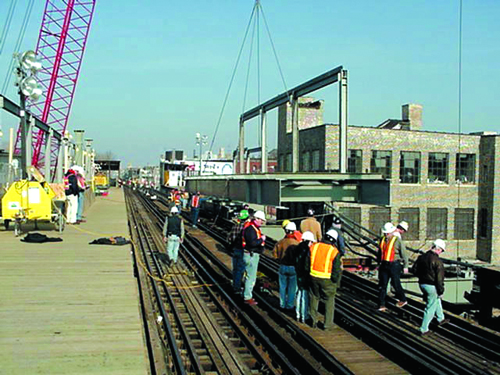Workforce Development Scenario Outcome
Workforce development refers to the services, programs, systems and networks that provide individuals with the education and skill development that they require to advance themselves in the labor market, allowing for greater economic prosperity and a higher standard of living. The GO TO 2040 Plan allows Chicago and the surrounding counties a chance to evaluate their present system of workforce development and envision how it can be transformed into a coordinated initiative that addresses the needs of the region's unique and diverse population.
In coordination with an advisory committee of regional experts, the Chicago Jobs Council has prepared general recommendations for actions to improve workforce development within the long-term context of the GO TO 2040 plan. The recommendations cover:
- Coordinated workforce, education, and economic development planning and information systems across the region; and
- Integrated and adaptive career and education pathway system driven by skill needs of employers and accessible to all workers in the region.
A report that provides more details on these recommendations is forthcoming and will be posted in this space when available; an executive summary is currently available.
Effect of physical planning decisions on workforce development
The purpose of the questions below is to understand how today's planning policy and investment decisions – covering transportation, land use, housing, economic development, and the natural environment – might affect workforce development in our region in 2040.
How would workforce development be affected by different economic development policies: focusing on investments in human capital (improving the region's workforce); infrastructure (investing in physical infrastructure such as transportation facilities); or innovation (including but not limited to technological innovation)?
-
Investing in human capital through education and other workforce services would directly and positively affect workforce development in the region.
-
Regardless of policy, economic development outcomes that include good living wages for people without high levels of education or skills are important. There appears to be potential for jobs that pay well and require higher levels of skills in industries that will be affected by environmental policy (such as renewable energy and energy efficiency), or through continued strengthening of the region's manufacturing base.
-
Economic development policies that focus specifically on improving conditions for lower-income residents (for example, targeting public resources to economically distressed neighborhoods) may increase access to worker training and jobs if they include resources for training and local hiring requirements.
How would workforce development be affected by different transportation investment alternatives: focusing on major infrastructure investments (road or rail expansions); low-capital operational improvements (improved bus service, sidewalks, and trails); or technology (including real-time information or improved traffic signal timings)?
-
Access to jobs is the most important link between transportation and workforce development, and the jobs-housing mismatch is a significant barrier to employment. Regardless of investment type, transportation systems could support workforce development by improving jobs-housing access.
-
Any infrastructure investments (including transportation) that creates new jobs can be implemented to include a workforce development strategy that develops training, access and hiring strategies for local job seekers.
How would workforce development be affected by different land use policies: focusing on dense, infill development; moderate densities with emphasis on community-centered design; or low-density new development?
-
Jobs-housing access can also be addressed through land use change, as another approach to the issue involves planning more affordable housing near job centers and attracting more employment to locations that already have affordable housing.
-
Land use policies that focus on dense and mixed use communities may increase access to training institutions by workers and employers.
-
Any infrastructure investments that result from land-use policy and that create new jobs can be implemented to include a workforce development strategy that develops training, access and hiring strategies for local job seekers.
How would workforce development be affected by energy policies: focusing on adopting clean energy sources; reducing the energy consumption of buildings; or reducing the energy consumption of the transportation system?
-
The energy sector could become a major growth industry, which would have workforce development impacts. In particular, energy efficiency retrofits of buildings – a type of "green job" – may be an important employment sector even in the short term.
-
Similarly, the successful growth of the energy sector requires a workforce with the necessary skills; workforce training programs should be developed in concert with energy policies.
-
Any infrastructure investments that result from energy policies and that create new jobs can be implemented to include a workforce development strategy that develops training, access and hiring strategies for local job seekers.
How would workforce development be affected by housing policies: preserving existing affordable housing; creating new affordable housing near transit and jobs; or reducing housing costs through energy efficiency improvements?
-
As discussed earlier, jobs-housing access is a critical concern in planning for affordable housing. There will always be a number of low-wage jobs in the region, and planning for housing for the people in these jobs is necessary. In addition to the strategies listed above, employer-assisted housing could also be an effective way to provide affordable housing.
-
Any infrastructure investments that result from housing policies and that create new jobs can be implemented to include a workforce development strategy that develops training, access and hiring strategies for local job seekers.
